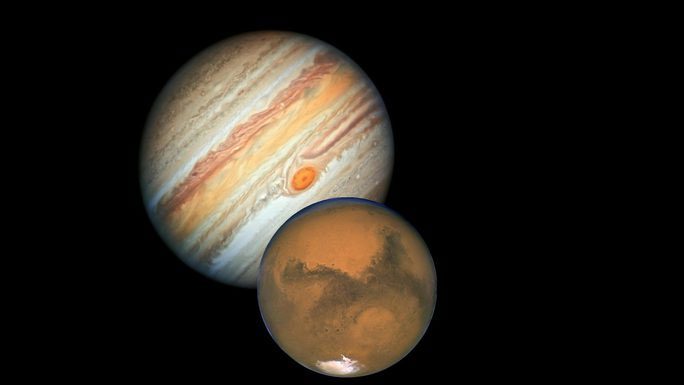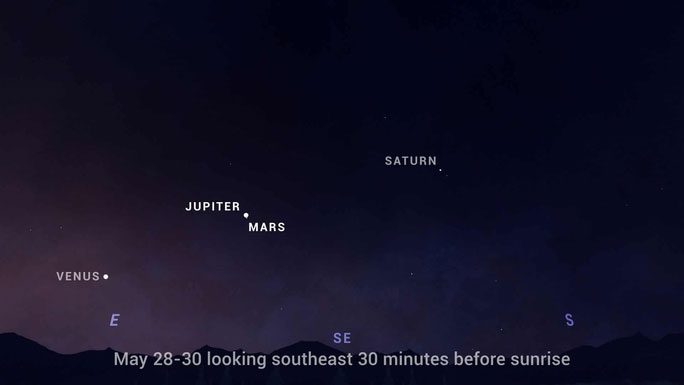According to Space, this is a spectacular conjunction between Mars and Jupiter. Of course, these two planets do not “swallow” each other in a literal sense; instead, they align from the perspective of Earth at dawn, creating the appearance of merging.

Jupiter (large) and Mars – (Photo: NASA/ESA)
The period during which these two planets are close to each other lasts from May 27 or 28 to May 30 or 31, depending on the time zone of each country.
According to NASA’s calculations, the two planets will be closest to each other at 8:57 AM GMT on May 29, which is 3:57 PM on May 29 in Vietnam. Naturally, we cannot observe the planetary conjunction in the morning. The angle of Earth also means that the conjunction can only be seen at dawn.
Therefore, in Vietnam, you can witness this special moment in the early morning of May 30.

Projected image when the two planets merge. They will still be half a degree apart, but it will be hard to notice with the naked eye – (Photo: SPACE)
Although Mars is closer to Earth, Jupiter—much larger and emitting a silvery-yellow light—will definitely be brighter and overshadow the red hue of Mars. This is also a time when the sky will not be disturbed by moonlight (during the new moon phase), making it very suitable for observing the dance of the planets.
NASA also predicts that this upcoming summer will offer an even more fascinating sight for Earthlings: a conjunction of five planets—Mercury, Venus, Mars, Jupiter, and Saturn; while telescopes may witness Uranus and Neptune joining the “dance.”
Uranus and Neptune are not observable with the naked eye.





















































